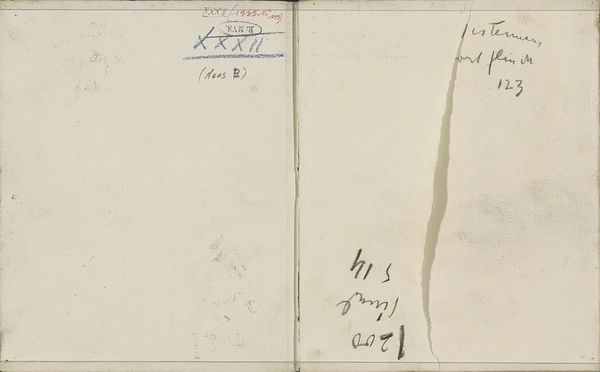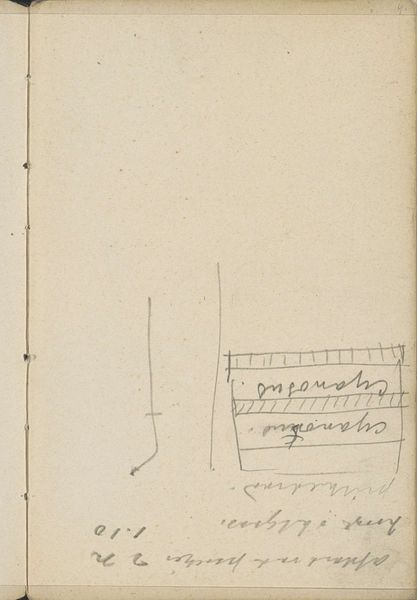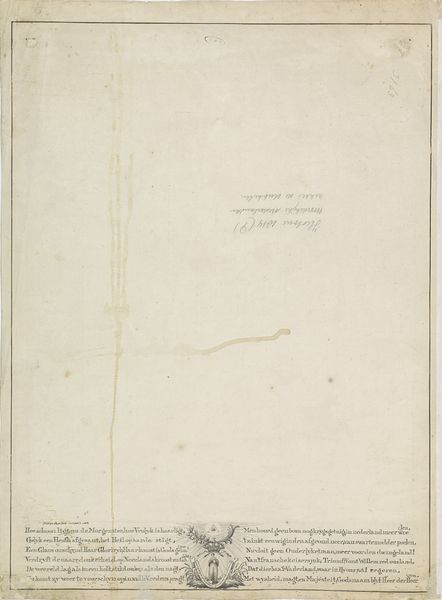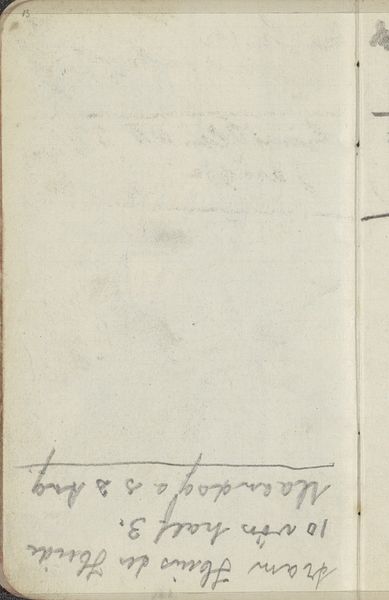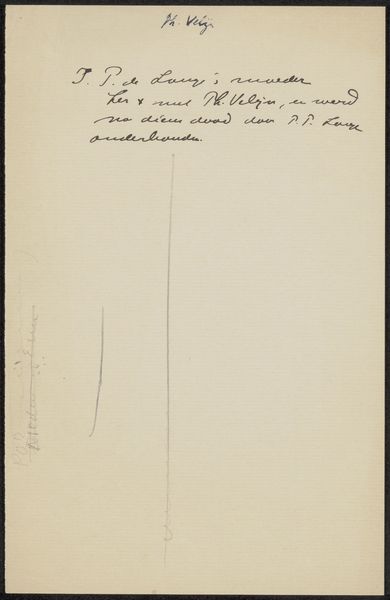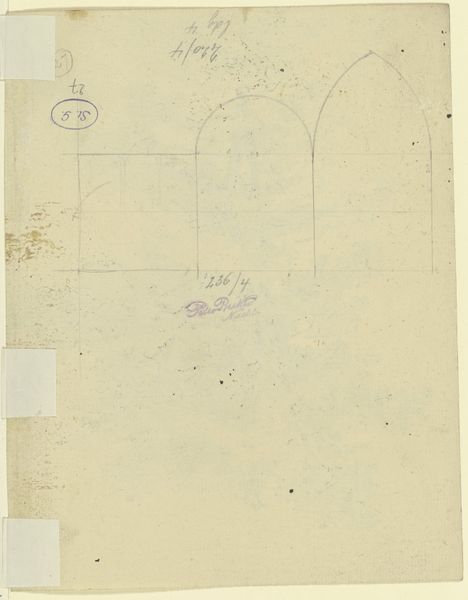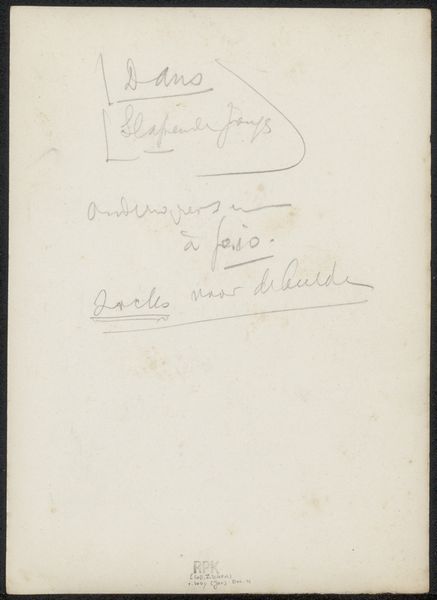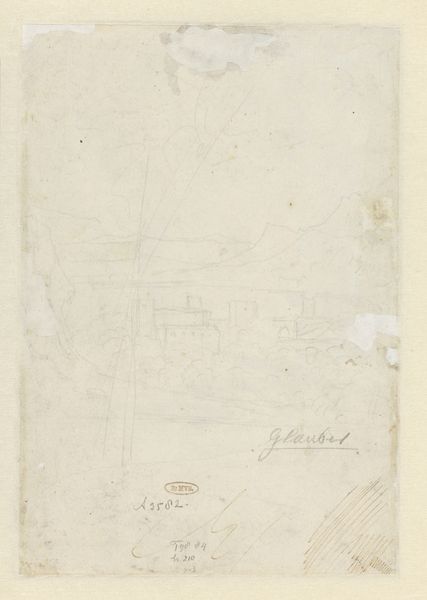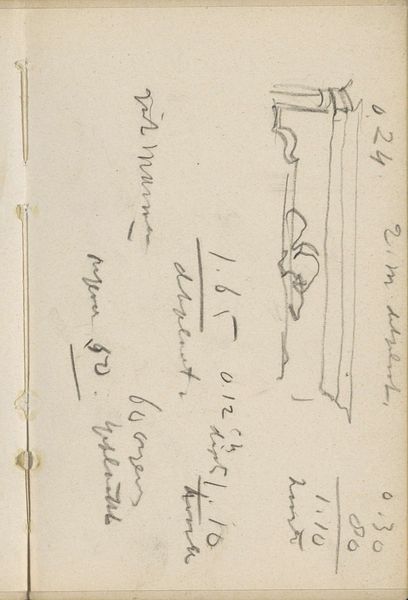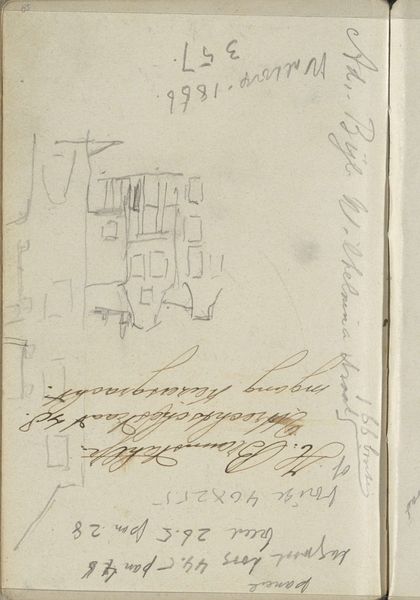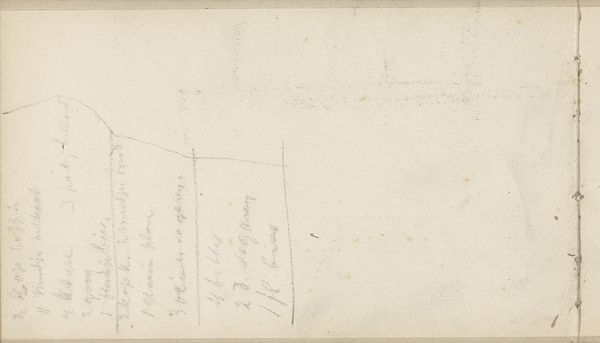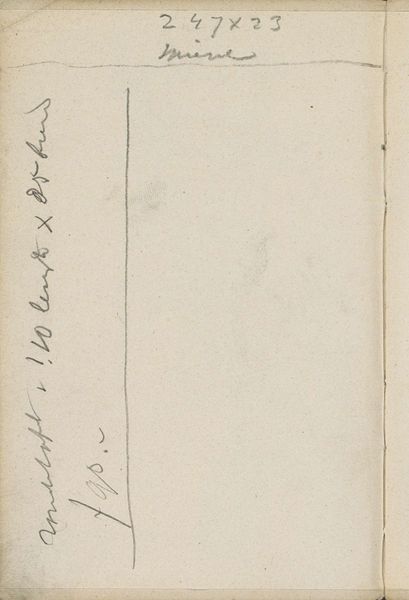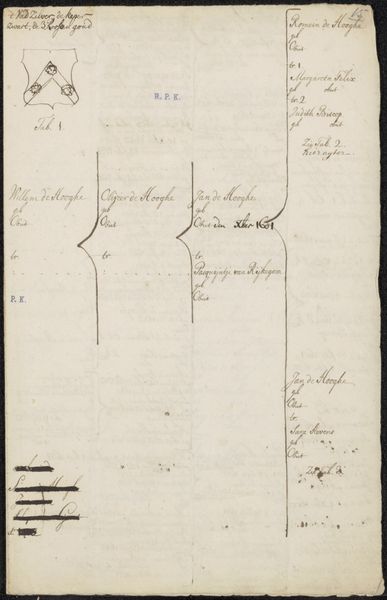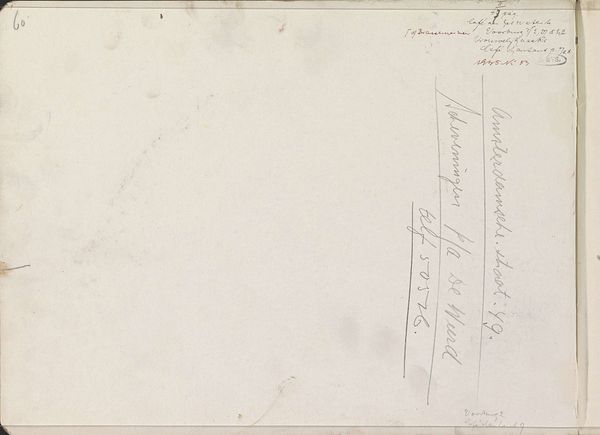
Design for a Stage Set at the Opéra, Paris 1830 - 1890
0:00
0:00
Dimensions: sheet: 9 5/16 x 4 1/8 in. (23.6 x 10.4 cm)
Copyright: Public Domain
Editor: This is Eugène Cicéri's "Design for a Stage Set at the Opéra, Paris," dating between 1830 and 1890, made with watercolor, drawing, and print on paper. It strikes me as more of an architectural blueprint than a traditional artwork. What catches your eye in this piece? Curator: Well, what fascinates me is how this blueprint reveals the very essence of illusion. Think about the cultural weight of the Paris Opéra, a symbol of societal aspiration and artistic grandeur. Yet, here we see its skeletal design, the 'canvas' upon which dreams are projected. Do you notice the handwritten annotations? They serve almost as incantations. Editor: Yes, the dimensions! But also, the notes seem to imply a veil or covering. It makes me think about concealing something. Curator: Exactly! This stage set is more than just architecture; it represents a liminal space where reality blurs. Notice the romantic style—the soft washes of color hinting at dramatic lighting, evoking emotion. Consider, then, what memories and meanings were meant to be made against this very backdrop. The set *itself* is a powerful symbol, regardless of the story told upon it. It evokes glamour and prestige. How might the artist tap into collective emotional responses in their stage design? Editor: So it’s not just about creating a scene, but crafting an experience through symbols and stagecraft. I see how even this seemingly simple blueprint holds so much depth. Curator: Indeed. It reveals how visual symbols, when carefully constructed, can profoundly influence our perception and stir our collective cultural memories. A potent design! Editor: I hadn't considered all those layers of symbolism before. This really expands my understanding. Curator: Precisely. It is within those layers where the true art lies.
Comments
No comments
Be the first to comment and join the conversation on the ultimate creative platform.
